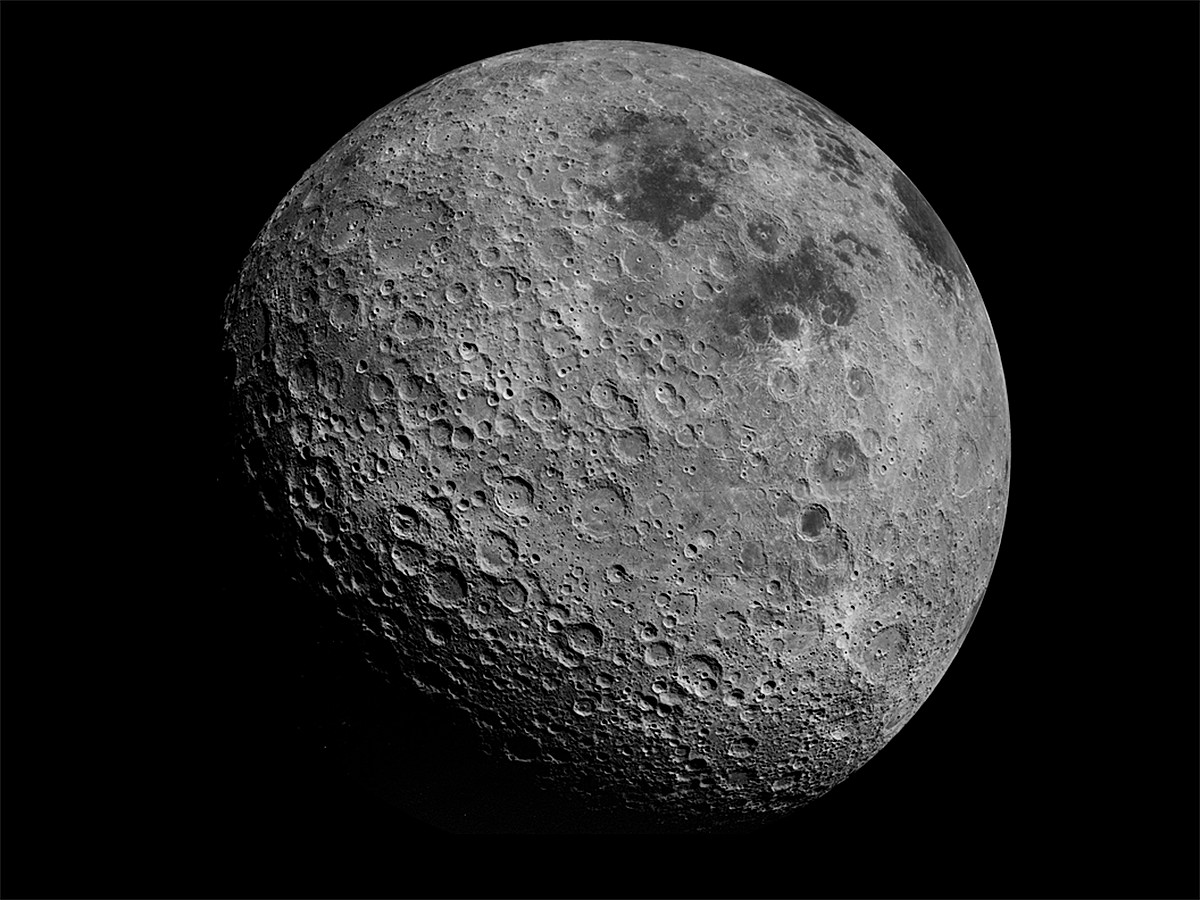

Once astronauts return to the moon, they might encounter a new geographical feature, if they venture to its far side: an unusually shaped crater caused by a rocket crash. In March, a used-up spacecraft smacked into the moon. While astronomers knew a collision occurred, the site and shape of the impact had been a mystery.
But on June 24, astronomers who combed through images from a lunar satellite spotted not only the location of the crash but a double crater—two gaps superimposed on each other—left behind on the moon’s surface. The discovery may help space agencies learn what happens when something artificial strikes the moon.
Two overlapping divots make up the double crater. An eastern crater 19.5 yards in diameter overlays a 17.5-yard-wide western one. NASA’s Lunar Reconnaissance Orbiter—a robotic spacecraft orbiting the moon that has been photographing its surface since 2009—took a picture of the crater that formed on March 4. However, it did not observe the exact moment of collision, forcing astronomers to scrutinize before and after pictures of the enormous impact.

Rocket parts have dug holes into the lunar surface before. The Apollo-era Saturn 5 rockets, which transported the first moon explorers, created craters. None left behind the newly found twin shape, however.
“It’s cool, because it’s an unexpected outcome,” Mark Robinson, a professor of geological sciences at Arizona State University who reported the discovery Friday, told The New York Times. “That’s always way more fun than if the prediction of the crater, its depth and diameter, had been exactly right.”
In January, amateur astronomer Bill Gray was the first to detect space junk on a collision course to the moon’s far side. The space junk turned out to be the upper stage of a discarded rocket, though no country has taken responsibility for it yet. Gray initially predicted the parts came from a SpaceX Falcon 9 rocket, which launched the Deep Space Climate Observatory (DSCOVR) in 2015. A NASA engineer later disproved this theory, because DSCOVR did not follow the same orbit as the discarded ship.
[Related: NASA finally fully fueled up its Artemis moon rocket]
Instead, the debris may have belonged to the Long March 3C rocket, which China launched in October 2014. Researchers from the University of Arizona confirmed the idea; the crashing object emitted wavelengths of light similar to those of other Chinese rockets. However, China denies its vehicle caused the crash, arguing the rocket stage used to launch the Chang’e-5 T1 spacecraft burned up when re-entering Earth’s atmosphere.
Regardless of the rocket’s origin, the double crater it made suggests the craft had large masses at both ends. Usually, a used-up rocket stage is heaviest at the bottom, where engines are located. Spent rockets should be lighter at the top, if their fuel tanks are empty. But something at this rocket’s upper end had enough heft to leave a dent—making this an odd but extraordinary case.
